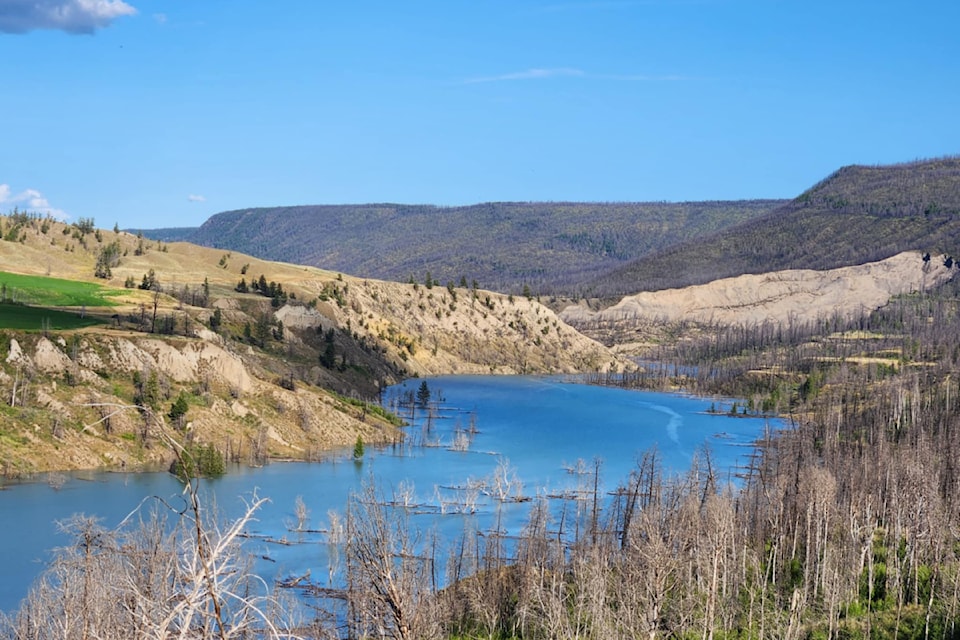B.C.'s emergency management minister says that when the water releases from the Chilcotin River landslide, it could take 12 to 24 hours to reach Hope.
But the province is emphasizing that mass evacuations are not anticipated based on modelling, Emergency Management Minister Bowinn Ma said during another update on the landslide Friday (Aug. 2). She was joined by Water, Land and Resource Stewardship Minister Nathan Cullen.
The landslide, which rolled down and blocked the Chilcotin River south of Williams Lake overnight Tuesday, is an estimated 1,000 metres long, 600 metres wide and 30 metres deep. Experts on the ground have already found evidence of some water leaking through the mass, but the exact amount being held back isn't known.
Ma said the province's work to monitor the landslide remains highly active and her ministry is working closely with communities along the Chilcotin River, and further along the Fraser River, to plan for potential flooding and debris flow.
"We continue to plan for worst-case scenarios, and current modelling indicates that an overtopping of the dam is more likely than a sudden release or break of the dam. Depending on the distribution and nature of the overtopping flow, the impacts could still be significant."
Ma, however, emphasized this is not a confirmation of what could occur and it's not the only scenario the province is planning for, "but it is one we are planning for."
She said there is no definitive timeline on when the water will begin to release, but modelling shows that when it does, the water could take 12 to 24 hours to reach Hope.
"All this is to say that there will be time to alert people at risk along the way ... It remains imperative for people, especially those living along the Chilcotin downstream of the landslide, to be prepared to leave on a moment's notice, if necessary."
Ma said there are a number of preparations underway, including deploying flood assets to communities such as Lillooet. The Emergency Management and Climate Readiness Ministry is also preparing health centres in Prince George, Kamloops and Surrey are on working on contingency planning.
In the Lower Mainland, people are being asked to stay away from the Fraser River this long weekend.
Cullen said the province's experts have gathered "critical information" over the last few hours and will be continuining to monitor the slide on a 24-hour basis to assess the conditions above and below the site. He said the province is "much better positioned" Friday to understand the nature of the slide and its potential impacts.
He added the lake level might rise to the point where water begins to flow over the top of the dam and re-enter the riverbed below, but it's also possible that the waer will seep through the dam and make its way downstream.
Cullen said this is a place that has had landslides before, most recently in 2004 and then previously in 1964. Any interventions the province makes, he said, should do no harm when asked if bombing could be a possible solution.
"There are a lot of opinions, of course, amongst many experts, but we as the province are engaging the best that we have in the field right now. First of all, to understand the nature of the dam and do the 2D modelling ... as well as the up- and down-stream modelling of water to understand what's going through at what rate and how quickly is the water rising behind the dam that's creating that overtopping scenario."
Neither Ma nor Cullen would discuss a possible cause of the slide.
– With files from Monica Lamb-Yorski



